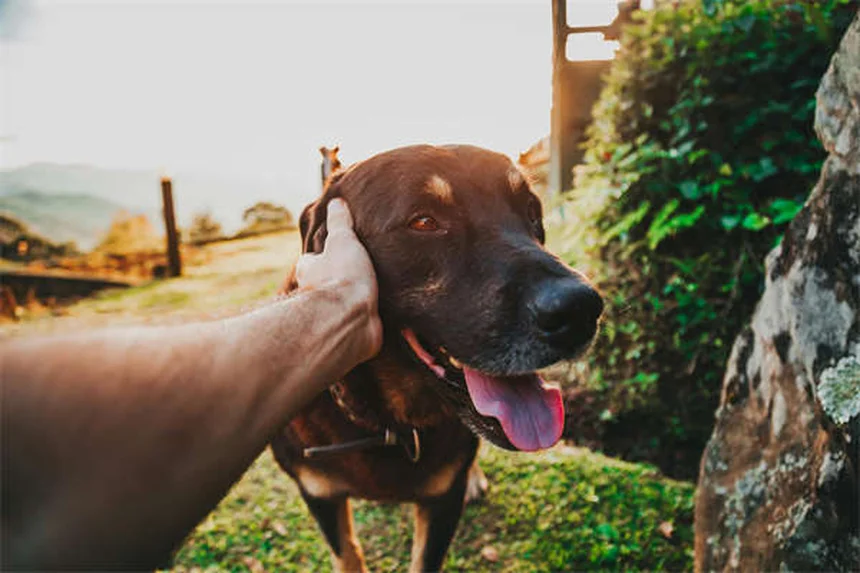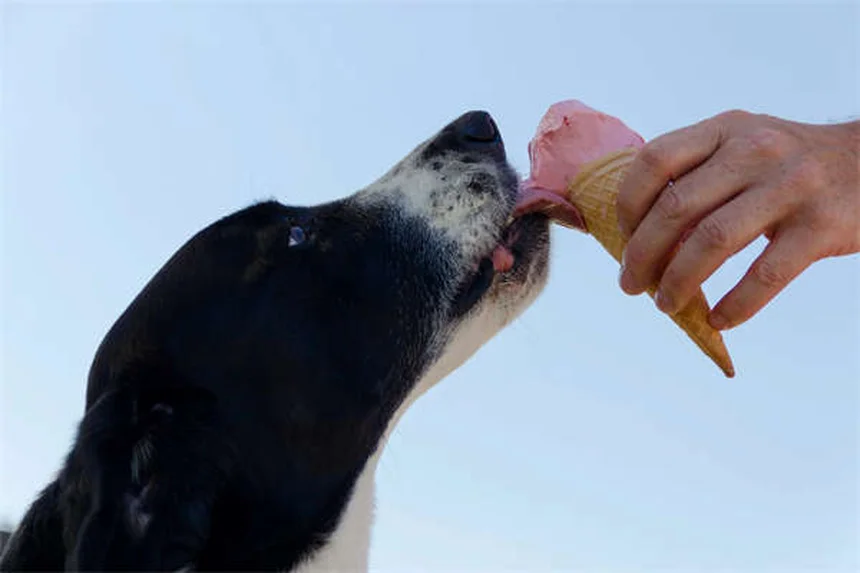Dog Urine Crystals: What Every Pet Owner Needs to Know
Dog urine crystals got you worried? Here's the deal: finding crystals in your dog's urine isn't always cause for alarm. The truth is, many healthy dogs have some crystals in their urine without any issues. But when should you be concerned? If your pup is showing symptoms like frequent urination, straining, or blood in their pee, those crystals might be telling us something important.I've seen countless cases where early detection made all the difference. The key is understanding that while some crystals are normal, others can signal underlying conditions like UTIs or even genetic disorders. Certain breeds like Dalmatians and Miniature Schnauzers are more prone to specific crystal types - knowledge that's saved many of my clients from unnecessary panic.The good news? Most urine crystal situations are manageable with proper diet and care. But here's what you really need to know: if your dog can't urinate or seems in pain while trying, that's an emergency requiring immediate vet attention. Let's dive deeper into what these crystals mean for your furry friend.
E.g. :Why Is My Dog Shaking? 10 Common Causes Explained
- 1、Understanding Urine Crystals in Dogs
- 2、The Crystal Lineup: Know Your Enemy
- 3、Spotting the Signs: Is Your Dog Trying to Tell You Something?
- 4、Diagnosis: Playing Detective with Dog Pee
- 5、Treatment: Fighting Back Against Crystals
- 6、Prevention: Keeping Crystals at Bay
- 7、Your Burning Questions Answered
- 8、Living with a Crystal-Prone Pup
- 9、The Hidden Dangers of Dehydration
- 10、Beyond the Basics: Lesser-Known Factors
- 11、The Supplement Solution
- 12、Real-Life Success Stories
- 13、Prevention Through Play
- 14、When Prevention Fails: Next Steps
- 15、Your Dog's Unique Needs
- 16、FAQs
Understanding Urine Crystals in Dogs
What Exactly Are These Tiny Troublemakers?
Picture this: you're enjoying your morning coffee when you notice Fido making frequent bathroom trips. Could those invisible urine crystals be the culprit? Let me break it down for you.
Urine crystals form when minerals in your dog's pee become too concentrated, just like salt crystals appearing when seawater evaporates. While they're often harmless, these microscopic troublemakers can sometimes signal bigger issues. The kidneys work hard filtering blood, removing waste through urine that travels from kidneys to bladder via ureters - think of them as tiny plumbing pipes!
When Should You Worry?
Here's the deal: not all crystals are created equal. Some are completely normal, while others might indicate:
- Bladder infections
- Genetic conditions
- Dietary imbalances
Ever seen a dog strain to pee? That's your red flag moment! Urinary blockages can become life-threatening emergencies if not treated immediately.
The Crystal Lineup: Know Your Enemy
 Photos provided by pixabay
Photos provided by pixabay
Common Culprits in the Canine World
Let's play detective and identify these microscopic mischief-makers:
| Crystal Type | Common Breeds Affected | Special Notes |
|---|---|---|
| Calcium Oxalate | Pomeranians, Mini Schnauzers | Can indicate antifreeze poisoning |
| Struvite | Labs, Cocker Spaniels | Often appears with UTIs |
| Ammonium Urate | Dalmatians, Yorkies | Linked to liver issues |
| Cystine | Newfoundlands | Rare genetic condition |
Did you know some crystals look like tiny gemstones under the microscope? Others resemble fireworks! While you won't spot them with naked eyes, you might notice sandy sediment in severe cases.
Why Does My Dog Have These?
Here's the million-dollar question: What causes these pesky crystals to form? The answer lies in three key factors:
1. Genetics: Some dogs are simply born predisposed - it's in their DNA!
2. Diet: What goes in must come out, and certain foods can tip the mineral balance.
3. Health Conditions: UTIs and other illnesses can create the perfect crystal-forming environment.
Spotting the Signs: Is Your Dog Trying to Tell You Something?
The Obvious Clues
Your dog won't say "Hey, my pee hurts!" but they'll show these symptoms:
- Frequent bathroom breaks
- Blood in urine (looks pinkish)
- Straining or whimpering while peeing
Remember that time Max had three accidents in one day? That wasn't spite - it might have been crystals!
 Photos provided by pixabay
Photos provided by pixabay
Common Culprits in the Canine World
Here's the tricky part: some dogs show no symptoms at all. That's why regular vet checkups are crucial. Think of it like your annual physical - prevention is always better than cure!
Diagnosis: Playing Detective with Dog Pee
Collecting the Evidence
Morning is prime time for urine collection! Why? Because overnight pee is most concentrated. Grab a clean container (yes, even that soup ladle works) and catch that golden sample.
Pro tip: Refrigerate if you can't deliver immediately. Nobody wants spoiled evidence!
What Happens at the Vet?
Your vet will:
- Examine the urine under a microscope
- Check pH levels
- Look for crystals and bacteria
It's like CSI: Canine Edition! The results will determine if Fido needs treatment or just dietary changes.
Treatment: Fighting Back Against Crystals
 Photos provided by pixabay
Photos provided by pixabay
Common Culprits in the Canine World
Ever heard the saying "You are what you eat"? For dogs with crystals, this couldn't be more true! Special prescription diets can:
- Dissolve existing crystals
- Prevent new ones from forming
- Balance urine pH levels
Popular options include Royal Canin Urinary SO and Hill's Prescription Diet. But remember - never switch foods without vet approval!
When Diet Isn't Enough
Sometimes crystals need extra firepower. Your vet might prescribe:
Potassium citrate - balances pH like a chemistry wizard
Antibiotics - kicks UTI butt
Special medications - targets specific crystal types
Think of these as your crystal-busting superhero team!
Prevention: Keeping Crystals at Bay
Long-Term Management
Here's the good news: most dogs recover beautifully with proper care. But prevention is key:
- Stick to prescribed diets
- Ensure plenty of fresh water
- Schedule regular urine checks
Remember Buddy, the Labrador who kept getting crystals? His owner started adding water to his meals, and problem solved!
When to Sound the Alarm
Watch for these emergency signs:
- Straining with no pee coming out
- Bloody urine
- Lethargy or loss of appetite
These require immediate vet attention - no waiting until morning!
Your Burning Questions Answered
Are Crystals Really Dangerous?
Here's the truth: crystals themselves usually aren't the problem. It's when they team up to form stones or cause blockages that trouble starts. Think of them like snowflakes - one is pretty, a blizzard can be dangerous!
What About Home Remedies?
I get this question all the time! While increased water intake helps, there's no magic home cure. Those internet "miracle solutions"? Save your money and trust your vet instead.
Remember Mrs. Johnson's Chihuahua? She tried cranberry juice for a month before coming in - turns out the poor pup needed antibiotics all along!
Can Certain Foods Cause Crystals?
It's not about specific brands, but about how your dog's body processes nutrients. Two dogs can eat identical food with completely different results. That's why personalized vet advice is golden!
Living with a Crystal-Prone Pup
Making It Work Long-Term
If your dog is prone to crystals, don't panic! Many dogs live happy lives with simple management:
- Regular vet checkups
- Prescription food (worth every penny)
- Plenty of bathroom breaks
Take it from me - with proper care, crystals don't have to ruin your dog's life or your peace of mind!
When to Consider Specialists
For tough cases, veterinary nutritionists or internal medicine specialists can work wonders. They're like the Navy SEALs of doggy healthcare!
Remember: you're not alone in this. Your vet team is ready to help you and your furry friend every step of the way. Now go give your pup some extra belly rubs - they deserve it!
The Hidden Dangers of Dehydration
Why Water Matters More Than You Think
You know that feeling when you're super thirsty after a long walk? Well, dogs experience the same thing, but they can't just grab a water bottle whenever they want! Dehydration is the silent partner in crime for urine crystal formation.
When your dog doesn't drink enough, their urine becomes concentrated - like orange juice turning into syrup. This creates the perfect environment for crystals to form. I've seen cases where simply increasing water intake solved crystal issues completely! Try adding an extra water bowl in different rooms or getting one of those cute pet fountains - dogs love moving water.
The Exercise Connection
Here's something most owners don't consider: activity levels directly impact hydration. An active dog needs way more water than a couch potato pup. After playtime, always check if the water bowl needs refilling.
Remember my neighbor's Border Collie? She was getting crystals despite eating prescription food. Turns out she needed nearly double the water on days they went hiking! Now they pack a collapsible bowl and extra bottles on every adventure.
Beyond the Basics: Lesser-Known Factors
Stress and Its Surprising Effects
Can you believe emotional stress might contribute to crystals? When dogs feel anxious, their bodies release hormones that can alter urine pH. Separation anxiety, new pets, or even construction noise could potentially trigger crystal formation in sensitive dogs.
I once worked with a rescue Shih Tzu who developed crystals every time his foster family traveled. We implemented calming techniques and the problem disappeared! Things like pheromone diffusers, extra cuddle time, or anxiety wraps can make a big difference.
Seasonal Changes Matter
Ever notice your dog drinks less in winter? Many owners don't realize crystal issues often spike during colder months. Dogs tend to be less active and drink less when it's chilly outside, but their bodies still need proper hydration.
Here's a fun trick: warm up their water slightly or add low-sodium broth to encourage drinking. Just a tablespoon per bowl can work wonders! My own dog goes crazy for this "special treat" during winter.
The Supplement Solution
Probiotics: More Than Just Gut Health
Did you know that a healthy gut microbiome might help prevent crystals? Emerging research suggests probiotics could support urinary health too. While we need more studies, many vets are now recommending specific strains for crystal-prone dogs.
The key is choosing the right product. Look for veterinary-approved probiotics containing strains like Lactobacillus acidophilus. I've had clients report fewer urinary issues after starting probiotics - though we always combine them with other treatments.
Cranberry Extract: Fact or Fiction?
You've probably heard about cranberry for human UTIs, but does it work for dogs? The answer isn't as simple as yes or no. While cranberry can help prevent bacteria from sticking to bladder walls, it doesn't directly affect most crystals.
That said, some prescription urinary foods include cranberry extract for its potential benefits. Just don't go pouring cranberry juice in your dog's bowl - the sugar content is too high! If you're curious, ask your vet about proper canine cranberry supplements.
Real-Life Success Stories
The Picky Eater Who Changed His Tune
Meet Charlie, a French Bulldog who refused to eat his prescription food. His owner tried everything - mixing in treats, hand-feeding, even pretending to eat it first! Then we discovered Charlie would happily eat the same food if it was slightly warmed with water.
This simple trick solved two problems at once: increased hydration and proper nutrition. Now Charlie's crystal-free and his owner isn't stressed at mealtimes anymore. Sometimes the solution is simpler than you think!
The Senior Dog Who Bounced Back
Goldie, a 12-year-old Golden Retriever, developed recurring struvite crystals. Her owners thought it was just "old age" until we discovered her decreased mobility meant she wasn't drinking enough because she didn't want to walk to her water bowl.
We placed bowls in every room and added ramps to make access easier. Within weeks, her crystals cleared up! This shows how important it is to consider your dog's changing needs as they age.
Prevention Through Play
Make Hydration Fun
Who says drinking water has to be boring? Try these creative ideas to encourage hydration:
- Ice cube "treats" with frozen low-sodium broth
- Water-filled puzzle toys that release treats when moved
- Adding water to meals (great for kibble-fed dogs)
My favorite success story involves a Lab who learned to "hunt" for ice cubes in a kiddie pool. His owner would hide them, and he'd have to find and "catch" them - drinking plenty of water in the process!
The Power of Routine
Dogs thrive on consistency, and bathroom habits are no exception. Regular potty breaks prevent urine from sitting in the bladder too long, which can contribute to crystal formation.
Set reminders if you need to - your phone probably has better memory than mine anyway! Even small changes like an extra walk before bedtime can make a big difference over time.
When Prevention Fails: Next Steps
Surgical Options Explained
In rare cases where crystals form stones that won't pass, surgery might be necessary. The good news? Modern veterinary medicine makes these procedures much safer than you might think.
Most dogs bounce back quickly - I've seen some wanting to play the same day! The key is catching problems early before they reach this stage. Regular checkups really do pay off.
The Cost Consideration
Let's be real: veterinary care isn't cheap. But compare the cost of prevention to emergency treatment:
| Prevention Method | Average Cost |
|---|---|
| Prescription Food (Monthly) | $50-$80 |
| Regular Urinalysis | $40-$60 |
| Emergency Surgery | $1,500-$3,000+ |
See what I mean? An ounce of prevention is worth a pound of cure - literally! Pet insurance or care credit options can help manage costs if needed.
Your Dog's Unique Needs
Why One-Size-Fits-All Doesn't Work
Here's something important: every dog's crystal situation is different. What worked for your friend's Chihuahua might not help your Great Dane. Factors like breed, age, and overall health all play a role.
That's why working closely with your vet is crucial. They can tailor a plan specific to your pup's needs. Don't be afraid to ask questions - we love engaged pet parents!
The Power of Observation
You know your dog better than anyone. Notice changes in drinking habits, energy levels, or bathroom behaviors? Trust your gut and mention it to your vet, even if it seems minor.
I'll never forget the client who noticed her dog was licking his lips more often - turned out to be an early sign of dehydration leading to crystals. Those small observations can make all the difference!
E.g. :Urine Crystals in Dogs: Causes and Treatment | PetMD
FAQs
Q: Are urine crystals in dogs always a sign of illness?
A: Not necessarily! Here's what I tell all my clients: urine crystals in dogs are common and often harmless. They form when minerals in your dog's urine become concentrated, much like salt crystals in evaporated seawater. Many healthy dogs have occasional crystals without any problems. However, if we see large numbers of crystals or certain types (like struvite or calcium oxalate), it might indicate an underlying issue such as a urinary tract infection or metabolic disorder. The breed of your dog matters too - some are genetically predisposed to specific crystal formations. Always consult your vet if you're concerned, but don't panic at the first mention of crystals!
Q: What's the best way to collect a urine sample from my dog for testing?
A: As a vet, I can't stress enough how important proper sample collection is! Here's my foolproof method: catch the first morning urine in a clean container - a soup ladle works great for smaller dogs. Why morning pee? It's the most concentrated and likely to show any abnormalities. If you can't get it to the vet immediately, refrigerate the sample (yes, next to your milk is fine!). Pro tip: take your dog out on leash first thing so you don't miss your chance. And please - no plastic bags or dirty containers! We've seen it all, and contaminated samples can lead to false results.
Q: Can I prevent urine crystals through my dog's diet?
A: Absolutely! Nutrition plays a huge role in crystal prevention. While no single food causes crystals, the right diet can work wonders. Prescription urinary foods are specially formulated to maintain optimal urine pH and mineral balance. I often recommend adding water to meals to increase hydration - more dilute urine means less crystal formation. But here's the catch: never switch foods without veterinary guidance. What works for one dog might harm another, especially with different crystal types. We once had a case where well-meaning owners switched to a "urinary health" food that actually worsened their dog's specific crystal type!
Q: How do vets treat different types of urine crystals?
A: Treatment varies based on crystal type, and here's why that matters: struvite crystals often dissolve with special diets and antibiotics, while calcium oxalate crystals might require medications like potassium citrate. For ammonium urate crystals (common in Dalmatians), we might use allopurinol. The approach is always tailored to your dog's specific needs. I've seen cases where simple dietary changes resolved the issue completely, and others requiring ongoing medication. The most important thing? Follow-up testing! We need to check if the treatment is working, usually through repeat urinalysis 4-6 weeks after starting treatment.
Q: What emergency signs should I watch for with urine crystals?
A: Listen up, because this could save your dog's life: straining to urinate with little or no output is a red flag emergency. Other danger signs include bloody urine, lethargy, or loss of appetite. Why the urgency? Crystals can clump together to form bladder stones or even cause complete urinary blockages - especially in male dogs. This is life-threatening within 24-48 hours. I'll never forget the Labrador who seemed "just a little off" until we discovered a complete blockage - emergency surgery saved him. When in doubt, err on the side of caution and call your vet immediately. It's always better to be safe than sorry with urinary issues!







